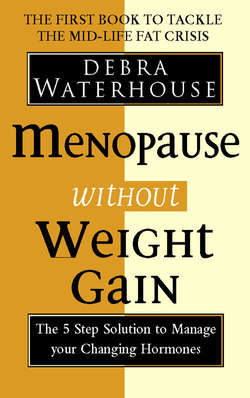Читать книгу Menopause Without Weight Gain: The 5 Step Solution to Challenge Your Changing Hormones - Debra Waterhouse - Страница 11
When Fat Cells Turn 55
ОглавлениеWhen you celebrate your 55th birthday, you’ll most likely fit the clinical definition of postmenopause: no periods for at least a year. This is a relief for most women, and it’s a sign that the transition is coming to a close. In addition, you’ll also be relieved by other positive changes that mark the end of your perimenopausal years.
• Your moods even out. Your son is no longer murmuring under his breath ‘mean-o-pause’.
• Your memory is making a comeback. You actually remember your daughter-in-law’s name again.
• You may still have a few hot flushes, but they no longer keep you awake all night or drench you during business meetings. Your emergency portable fan is no longer necessary.
• Your weight has stabilized on its own, and you are pleasantly surprised to find that you’ve lost a couple of pounds without really trying.
Finally some good news! Once you stop menstruating and become postmenopausal, your fat cells have successfully accomplished their mission. The storage enzymes deactivate, some of the fat-releasing enzymes get their jobs back, and your fat cells actually shrink a bit in size.
Researchers at the University of Gothenburg in Sweden found that when postmenopausal women lost weight, virtually all of their 30 billion fat cells got smaller. The fat cells in their stomachs, abdomens, thighs and buttocks all gave up their stubborn nature and all surrendered fat.
When you were premenopausal, the fat in your buttocks, hips and thighs was the most stubborn because it was needed for fertility and pregnancy. When you were a perimenopausal woman, the fat in your waist was the most resistant because it was needed to start producing oestrogen. Now that you are postmenopausal, the fat in all areas of your body becomes a bit more amenable to giving up fat. One client asked, ‘You mean I have to wait until my 55th birthday to lose weight?’ Absolutely not. The programme offered in this book is designed to encourage weight loss during the menopausal transition. It’s simply an added bonus that fat cells will shrink on their own after the transition.
There’s more good news: You’ll start noticing more cravings for protein and vegetables instead of sugar and fat. Your body is more interested in amino acids to maintain muscle mass, and nutrients to keep you healthy, than in fat and sugar to keep your fat cells storing.
Let’s summarize the entire transition: Somewhere around age 35, an alarm went off in your fat cells. A slightly lower oestrogen reading was detected, and your fat cells entered the transition to the menopause. They knew your body’s geography like the back of their hand and knew where they were needed the most. On cue, the fat cells surrounding your liver and adrenal glands were activated, because this was the exact geographic location where all the necessary factors were present to produce oestrogen. Then, for the rest of your transition, a convergence of factors guaranteed that you gained some extra body fat, especially in your waist.
Through checks and balances and back-up plans, your fat cells made sure that they accomplished their goals of oestrogen production and survival. Your health, vitality and longevity depended on it.
